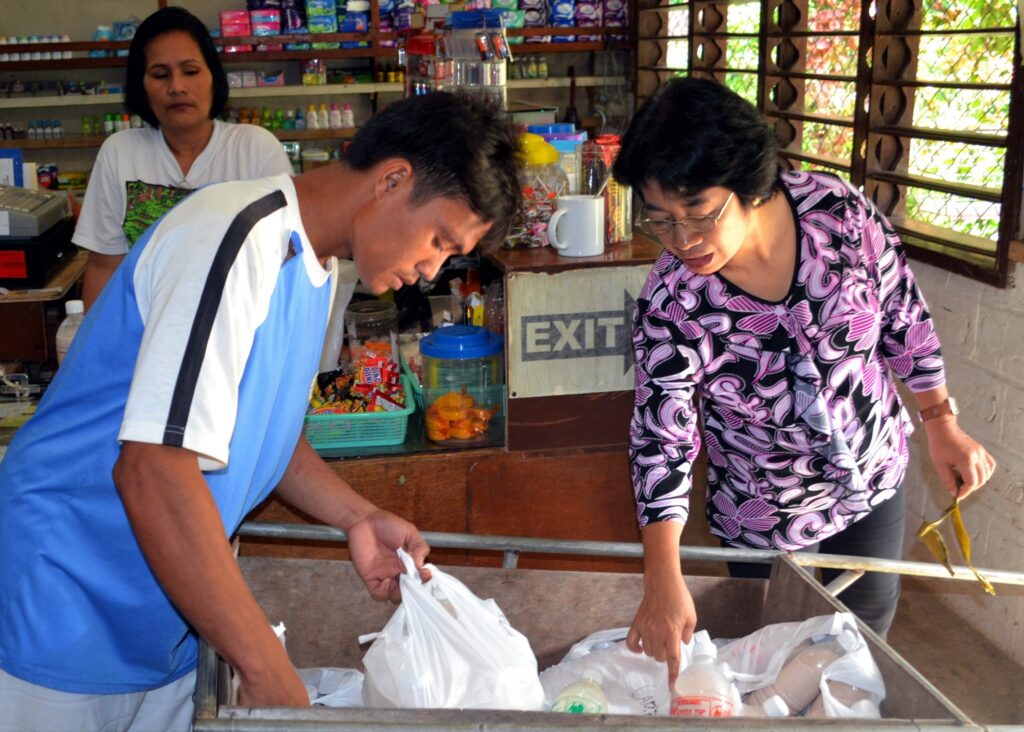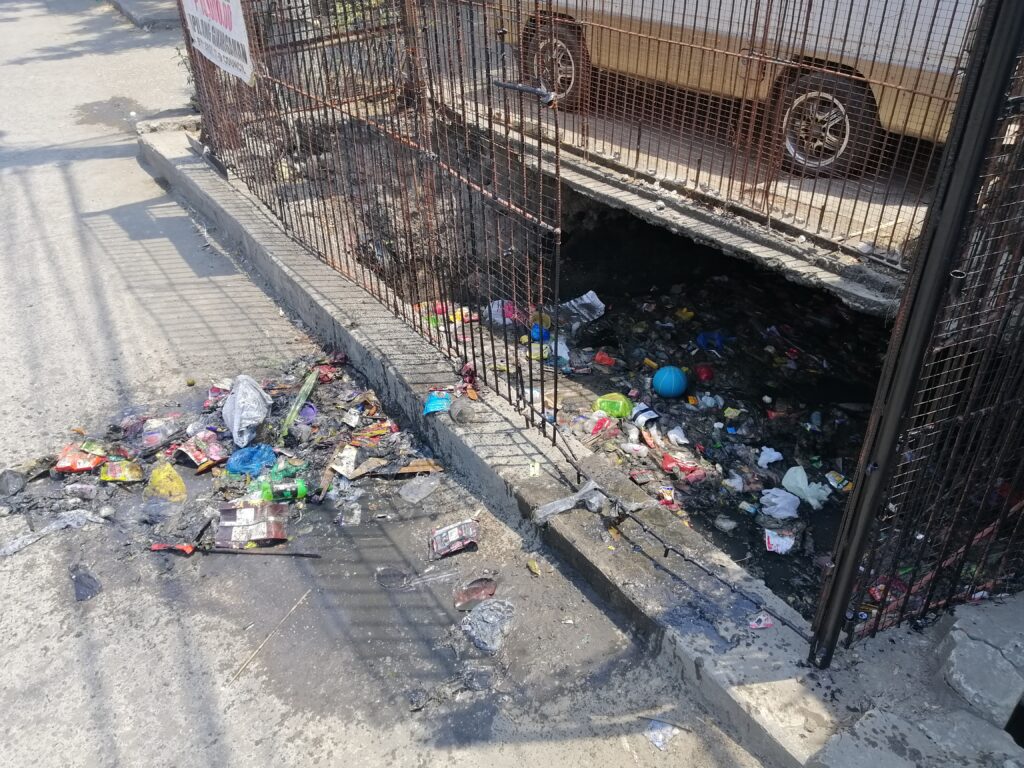END PLASTIC POLLUTION – NOW!
Text and Photos by Henrylito D. Tacio
Although January – declared as National Zero Waste Month – is over, lawmakers and the Department of Environment and Natural Resources (DENR) are urging Filipinos to change their ways when it comes to using single-use plastics.
“Zero Waste” is an advocacy campaign that aims to guide people in changing their lifestyles and practices towards sustainable systems in an ethical, economical, and efficient way, and to ensure that wastes become valuable for other uses.

As such, Deputy Speaker Loren Legarda calls the government for strict regulation of plastic production and strict implementation of a single-use plastics policy. “There must be a more stringent regulation on the use of plastic bags to curb pollution and mitigate the harmful effects of marine litter,” she said in a press statement.
At present, there are 38 House Bills and resolutions and seven Senate bills which are all seeking to regulate the use of plastics.
Among these are the proposed Single-Use Plastics Regulation and Management Act of 2019 under House Bill No. 635 which has already been filed to strictly regulate the production, importation, sale, and use of plastic bags. It seeks to phase out single-use plastics and encourage the use of native reusable bags made of organic or recycled materials, and reusable containers made of glass or non-toxic and non-hazardous materials.
Last year, Secretary Roy Cimatu of the Department of Environment and Natural Resources (DENR) signed National Solid Waste Management Commission (NSWMC) Resolution No. 1363, series of 2020, which bans the use of “unnecessary” single-use plastics products, particularly cups less than 0.2 millimeters in thickness, drinking straws, coffee stirrers, spoons, forks, knives, labo or thin and translucent bags, and thin-filmed sando bags lower than 15 microns.
As a result of the resolution, the DENR managed to ban “unnecessary” single-use plastics at government offices.
Another good news: the Department of Science and Technology (DOST) announced that plastic straws and stirrers are officially included in the Non-environmentally Acceptable Products and Packaging (NEAPP).
Environmental groups, however, want more. They wanted the list to be released believing it would facilitate the prohibition of the use, distribution, manufacture, and importation of specific NEAPP items. “This would tremendously help local governments eliminate their waste and become cleaner, healthier, and more climate-resilient communities,” they stated.

“The list of NEAPP as mandated by RA 9003 is a crucial list for our fight to end plastic pollution,” said Atty. Mark Penalver, executive director of Interfacing Development Interventions for Sustainability (IDIS). “With the list, we can demand from the plastic industry/manufacturer to look for alternatives and to shift to a more environmentally sound production.”
It was former President Benigno S. Aquino III who signed the Ecological Solid Waste Management Act of 2000 (Republic Act No. 9003), which aims to promote environmental awareness and action among Filipinos and establish public participation in the development of national and local integrated, comprehensive and ecological waste management programs.
Environmental groups proposed the following single-use plastics to be banned in the Philippines: plastic labo, plastic bags including oxo-degradable plastics, plastic cutleries, plastic straw, plastic stirrers, plastic bottles, plastic cups and plates, thin plastic take-out containers, Styrofoam or polystyrene food containers, and sachets, packaging, or products that are multilayered with other materials.
Environmental groups continuously campaign for sustainable alternatives such as metal/glass straws, eco-bags, bamboo stirrers, bamboo/metal spoons and forks, reusable cups, and more instead of using single-use plastics.
“Plastic production and consumption have snowballed since large-scale production began in the 1950s,” reports Stephanie B. Borrelle, a postdoctoral research fellow at the University of Toronto. “In 2020, an estimated 24 million to 34 million tons of plastic waste will enter the world’s lakes, rivers, and oceans. That is roughly the weight of 21,000 rail locomotives.”
If the trends continue without improvements in the way the world manages plastic waste, she believes the world could be spewing as much as 90 million tons of plastic waste into the world’s water by 2030.
Plastics are “in our air, our water, our food, our excrement,” observed Nina Butler, the chief executive officer of More Recycling, a research and consulting company that works with the plastics industry on recycling. “It’s very, very pervasive.”
Most of these plastics become garbage which may not go directly into landfills. In fact, most of them end up in the oceans which, most people think, no level of human assault could damage them as they are vast and resilient.
A World Bank report estimates that humans produce 2.01 billion metric tons of trash per year. By 2050, that figure will rise by 70% to 3.4 billion metric tons. Of this trash, only 13.5% is recycled, while only 5.5% is composted. Thus, 81% of this trash is discarded in landfills or incinerated.
“If we continue at our current pace, we will need new planets as landfills,” deplored Tricontinental: Institute for Social Research.

Most of those discarded in landfills, as stated earlier, find their way into the oceans. According to Ocean Conservancy, 8 million tons of plastics enter the ocean each year on top of the 150 million tons of plastics that already circulate in the ocean.
The Philippines is one of the top five contributors of plastic waste in the world’s oceans, said Cimatu, citing a United Nations report. “We produce 2.7 metric tons of plastic waste every year,” Cimatu said in a press statement. “Following this trajectory production and mismanagement, UN reports predicted that by 2050, there will be more plastic in the oceans than there are fish.”
“Our insatiable dependence on plastic has led us to a man-made environmental crisis which is currently still growing in size. Our oceans and beaches are increasingly awash with waste plastic, while plastic dumping and landfill are at an all-time high,” Global Initiatives pointed out.
In the Philippines, about 35,580 tons of garbage is generated every day, according to a paper, “Status of Solid Waste Management in the Philippines,” written by Alicia Castillo and Suehiro Otoma. “On average, each person in the country produces about 0.5 kilograms and 0.3 kilograms of garbage every day in the urban and rural areas, respectively,” the two authors wrote.
In Metro Manila alone, about 8,636 tons of garbage is generated every day – that is, 0.7 kilogram per person per day “due to its modernized lifestyle.” Bulks of the garbage are in the form of plastics.
The World Wide Fund for Nature (WWF)-Philippines traced the huge garbage problem to poverty. “People still buy many products in small amounts – cheaper, but resulting in much more waste,” the attached agency of an international non-government organization observed.
WWF-Philippines has conducted several coastal clean-ups to address marine debris in some parts of the country. “As the Philippines is one of the so-called ‘sachet economies,’ most of the debris gathered during clean-ups are plastic, including single-use sachets for shampoo, toothpaste, creams, laundry soap, and even food,” said Dan Ramirez, the organization’s communications and media manager, in an article featured in its website.

Legarda said single-use plastics continue to be a waste management problem in the country. Despite the negative effects of plastics, the majority of Filipinos are still dependent on the “sachet economy.”
She encourages Filipinos instead to use alternatives as plastic products have exceedingly long lifetimes. For instance, an ordinary beverage plastic bottle has a lifespan of up to 450 years. Other forms of plastic disintegrate under the action of weather, sun, and waves into tiny particles called microplastics, which are eaten by fish, and that makes it very dangerous to humans.
Plastics also plays a role in climate change as its production, refining, and manufacture is a source of greenhouse gas emissions since it uses fuel in extraction and transport.
“Greenhouse gas emissions from the plastic lifecycle threaten the ability of the global community to keep global temperature rise below 1.5°C,” the IDIS said in a statement. “By 2050, the greenhouse gas emissions from plastics could reach over 56 gigatons, which is 10-13% of the entire remaining carbon budget.”
“The worsening issue of pollution further aggravated by natural hazards should serve as our wake-up call,” Legarda said.

